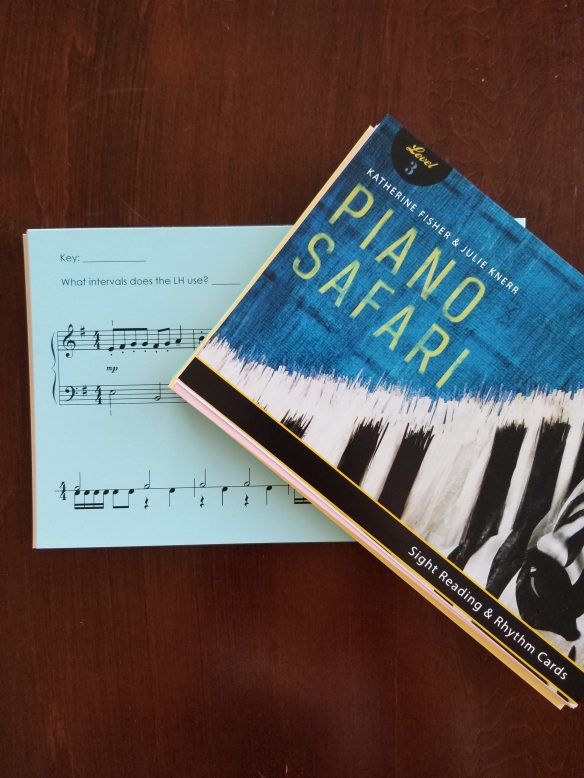 This spring I tried a new sightreading challenge in the studio. I used the sightreading cards from Piano Safari and designed a simple punch card using Word.
This spring I tried a new sightreading challenge in the studio. I used the sightreading cards from Piano Safari and designed a simple punch card using Word.


The sightreading cards are a wonderful resource. I considered making my own sightreading pages but was pleased to find these. There are three main levels in the Piano Safari sightreading cards (labeled 1-3), each containing multiple levels within (labeled A-R), Each alphabetical label contains 14-16 cards. The level sequencing is developmentally sound, gradually increasing from off-staff reading to hand separate playing to hands together playing in different keys. I also love the dedicated rhythm reading at the bottom of each card.

I set up the sightreading challenge in this way: I made a chart in Excel with each student’s name and sixteen squares to be colored in upon the completion of each card. Most students were able to finish two cards per lesson. I didn’t want to do many more than that per lesson so as not to take up too much lesson time.
In the lesson I would place the card on the piano. With younger students, I would work through the card with them. In the rhythm section, I would point to the rhythm and tap my hand simultaneously to assist the student. With older students, I would give them thirty seconds or so to place their hands in the correct position and practice silently on top of the keys. I would usually tap along with the student in the rhythm section.

After completing sixteen sightreading challenges, students earned a reward, completed their punch cards, earned a badge and finished coloring in their charts.

I made business card-sized sticker badges to hand out to students upon completion of the challenge. I created these in Word and printed them out on sticker paper. Students enjoyed placing them in various places on their studio binders.
I really do believe the sightreading challenge has helped the students improve their reading skills. A little reading challenge in each lesson helps solidify treble and bass clef notes for younger students; and for older students it give them short exercises in different keys.



Some of the benefits:
- Separating parts of music – I really thought the dedicated rhythm tapping at the bottom of each card was helpful.
- Quick deep dive on intervals – students were asked to identify different intervals, which was an excellent quick review.
- Short exercises – the students felt the cards were games, not drudgery at all
- Reward – always helpful in motivating students!
- Rhythm tapping – I could easily identify weaknesses pertaining to an individual student or to many students. (Some examples – an individual student had trouble tapping both hands together. A few students struggled with the dotted quarter note rhythm.) Having identified these weaknesses, it was easier to concentrate on these skills in the lesson.
Things to do differently next time – I would probably not do so many cards – maybe only ten total. Since we only played through two cards per week, this made the challenge pretty long – about eight weeks.
Student comments:
- “I like doing those.”
- “The rhythm tapping is so fun!”
- “I’m getting better at tapping rhythms.”
- “I really think I’m getting better at reading music.”
- “Sightreading is always fun!”
One student asked to continue sightreading upon completing the challenge. This makes me happy!

Pingback: Happy Teaching Moments | May 2018 | the view from my studio
Pingback: End of Year Studio Recap | the view from my studio